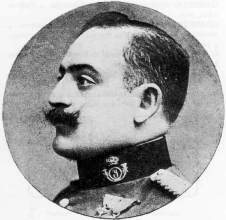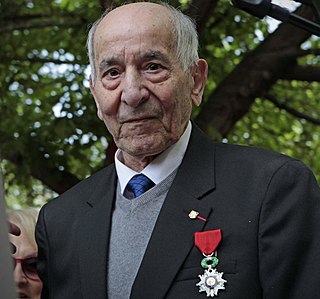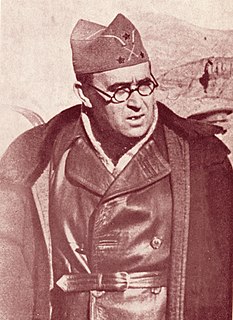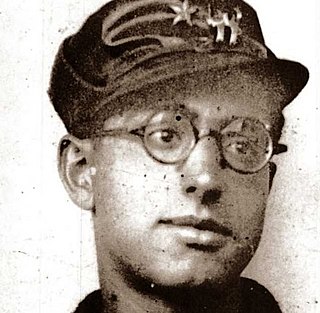 W
WLuis Ortiz Alfau (1916–2019) was a Baque militiaman, also known as "gudaris", who defended the Second Republic during the Spanish Civil War (1936–1939). After the end of Francoism and what was later the boom of historical memory at the end of the 20th century, Luis participated in the recuperation of the memory of the Spanish Civil War.
 W
WJosé Aranguren was a Republican general during the Spanish Civil War. From Ferrol, he commanded the Guardia Civil. After the Nationalist victory, he was court-martialed and sentenced to death, being executed by firing squad in Barcelona.
 W
WFederico Borrell García was a Spanish Republican and anarchist militiaman during the Spanish Civil War, commonly thought to be the subject in the famous Robert Capa photo The Falling Soldier.
 W
WÁngel Botello was a Spanish-Puerto Rican painter, sculptor and graphic artist. He was dubbed "The Caribbean Gauguin" for his use of bold colors and depictions of island life. Botello is considered one of the greatest Latin American post-modern artists and recognition and demand for his artwork continues to grow today, fetching unprecedented auction prices.
 W
WMiguel Buiza Fernández-Palacios was a Spanish Navy officer best known for being the commander of the Spanish Republican Navy during the Spanish Civil War. He died in exile in Marseille in 1963.
 W
WMarcelino Camacho Abad was a Spanish trade unionist and politician. He was a founding member of Comisiones Obreras (CCOO) and its first Secretary-General, holding this position between 1976 and 1987, and a communist deputy for Madrid Province between 1977 and 1981.
 W
WRicardo Carballo Calero, self-styled as Ricardo Carvalho Calero from 1981 onward, was a Spanish philologist, academic and writer. He was the first Professor of Galician Language and Literature at the University of Santiago de Compostela. He was a member of the Royal Galician Academy, the Lisbon Academy of Sciences, and also an honorary member of the Galician Language Association. He was one of the main theorists of contemporary Galician reintegrationism and his works on this field are considered a primary reference. Many consider Carballo Calero as one of the most prominent figures of the twentieth century Galician intelligentsia.
 W
WSegismundo Casado López was a Spanish Army officer in the Second Spanish Republic during the Spanish Civil War, commanding the Republican Spanish Army in 1939.
 W
WMaria Josep Colomer i Luque, better known as Mari Pepa Colomer, was one of the pioneers of Spanish aviation. She was the first female flight instructor in Spain and the first Catalan woman to earn a pilot's license.
 W
WJosé Buenaventura Durruti Dumange was a Spanish insurrectionary, anarcho-syndicalist militant involved with the CNT, FAI and other anarchist organisations during the period leading up to and including the Spanish Civil War. Durruti played an influential role during the Spanish Revolution and is remembered as a hero in the anarchist movement.
 W
WJosé Fondevila García was born in 1884 in the small village of Bermés, Lalín, province of Pontevedra, in the Spanish north-west region of Galicia. At the age of seventeen, he emigrated to Buenos Aires, Argentina where he first began with Union activities. In his trips through some Latin American countries, such as Brazil, Chile, Peru and Mexico, he took part in several struggles related with problems in the working environment. He finished his voyage in New York City, where he established himself as a mechanic.
 W
WMariano Gámir Ulíbarri was a Spanish general who fought on the Republican side during the Spanish Civil War (1936–39). He was Basque, a career soldier, and had no political affiliation. He commanded a brigade on the Aragon front in the early months of the war, then was assigned to command the Basque forces in May 1937. He retreated westward from Basque country in June 1937 when attacked by greatly superior Nationalist forces. Soon after he was given command of the Army of the North, and tried to defend Santander. When this fell, he moved to Asturias, where he was replaced as commander. He escaped, returned to Valencia, and was briefly given command of a brigade, but was moved to a less responsible post due to doubts about his ability. After the war he lived in exile in France, where he wrote his memoirs, before being allowed to return to Spain a few years before his death.
 W
WAndrés García La Calle was the squadron leader of the 1st fighter squadron of the Spanish Republic and later Commander of all the fighter units of the Spanish Republican Air Force during the Spanish Civil War.
 W
WMiguel García Vivancos was a Spanish Naïve painter and anarchist. He was a member of the National Confederation of Labor, during the Spanish Civil War he commanded several military units. With the defeat of the Republic he went into exile, where he developed a career as a painter. He was artistically known by his second surname.
 W
WRafael Gómez Nieto was a Spanish soldier and veteran of the Spanish Civil War and World War II.
 W
WLuis González de Ubieta y González del Campillo was an admiral of the Spanish Republican Navy during the Spanish Civil War. He died in exile as the captain of merchant vessel Chiriqui, refusing to be rescued when the ship under his command sank in the Caribbean Sea not far from Barranquilla.
 W
WAmado Granell Mesado was a Spanish military officer. He served on the Republican side in the Spanish Civil War before joining the French Foreign Legion. In France, he fought against Nazi Germany during World War II. He led a column of La Nueve of the 2nd Armoured Brigade, which consisted of Spanish combatants, and was the first Allied military unit to enter Paris after being occupied by the Wehrmacht. As such, he appeared on the cover of the newspaper Libération after the Liberation of Paris and met with the leader of French Resistance, Georges Bidault.
 W
WGregorio Jover Cortés was an Aragonese anarcho-syndicalist and a member of the CNT during the first third of the 20th century. During the Spanish Civil War he was commander of the Ascaso Column and later the militarized 28th Division, which fought on the Aragon front.
 W
WEmilio Herrera Linares was a Spanish military engineer and physicist.
 W
WIgnacio Pío Juan Hidalgo de Cisneros y López-Montenegro was a Spanish military aviator. He is known as commander of the Republican air force during the Spanish Civil War. He is also noted as one of few aristocrats who joined the Spanish Communist Party and author of war memoirs, published in the 1960s.
 W
WEnrique Jurado Barrio was a Spanish military colonel who fought in the Spanish Civil War for the Second Spanish Republic. Born in a family with a strong military background, Jurado participated in the war in Morocco, and on war merits he was promoted despite his opposition to this type of promotion.
 W
WFrancisco Llano de la Encomienda (1879–1963) was a Spanish soldier who served in Africa and was promoted to General in 1931. During the Spanish Civil War (1936–39) he remained loyal to the Second Spanish Republic. He was in command of the troops in Barcelona when a military revolt was attempted on 19 July 1936. He was imprisoned by the rebels, and after the revolt was relieved of his command. He was given command of the Army of the North in November 1936 but was not able to form a unified command. He was handicapped by regional jealousies and a mixed command of regular troops and militia. He was dismissed in May 1937 shortly before the north of Spain fell to the insurgents. He took refuge in Mexico after the war.
 W
WJulio Mangada Rosenörn was a prominent Spanish Republican Army officer during the Second Spanish Republic and the Spanish Civil War.
 W
WCipriano Mera Sanz was a Spanish military and political figure during the Second Spanish Republic.
 W
WJosé Miaja Menant was a General of the Second Spanish Republic.
 W
WJuan Guilloto León, usually referred to as Modesto or Juan Modesto, was a Republican army officer during the Spanish Civil War.
 W
WAntonio Ortega Gutiérrez was a Spanish Republican military officer and acting president of Madrid Football Club between 1937 and 1938 during the Spanish Civil War; directly involved in the defense of Madrid.
 W
WBožidar "Boško" Petrović was a Yugoslav fighter ace of the Spanish Civil War and professional footballer.
 W
WVíctor Pey Casado was a Spanish-born Chilean engineer, professor and businessman.
 W
WColonel Ildefonso Puigdendolas Ponce de Leon was a Spanish military officer who served the Republic during the Spanish Civil War. In 1931 he was colonel of Infantry in Seville as inspector of the security corps. In 1934 he was appointed to Malaga. In July 1936 he defeated the rebels forces at Alcala de Henares and Guadalajara. After that, he commanded the Loyalist militia at the Battle of Badajoz in 1936. After the battle of Badajoz he escaped to Portugal and returned to the zone controlled by the Spanish Republican Army. During the battle of Seseña Puigdendolas was killed by his own men when trying to prevent desertion.
 W
WJuan Pujol Garcia, also known as Joan Pujol Garcia, was a Catalan spy who acted as a double agent loyal to Great Britain against Nazi Germany during World War II, when he relocated to Britain to carry out fictitious spying activities for the Germans. He was given the codename Garbo by the British; their German counterparts codenamed him Alaric and referred to his non-existent spy network as "Arabal".
 W
WJosé Riquelme y López-Bago was a Spanish soldier noted for his involvement in the Second Moroccan War and the Spanish Civil War. He opposed the dictatorship of General Primo de Rivera. In 1987 he was honoured posthumously by King Juan Carlos who restored to him the rank of Lieutenant general.
 W
WJosé Robles Pazos was a Spanish writer, academic and independent left-wing activist. Born to an aristocratic family, Robles embraced left-wing views which forced him to leave Spain and go into exile in the United States.
 W
WVicente Rojo Lluch was Chief of the General Staff of the Spanish Armed Forces during the Spanish Civil War.
 W
WCarlos Romero Giménez, sometimes misspelled Jiménez, was a Spanish soldier loyal to the Spanish Republic, and one of the most prominent figures in the Siege of Madrid during the Spanish Civil War. Subsequently, a member of the French Resistance, he fought the Nazi occupation from Bordeaux as part of the Maquis. He was President of the Spanish League for Human Rights.
 W
WRamón Rubial Cavia was a Spanish socialist leader. He was a main leader of the Spanish Socialist Workers' Party in the Basque Country and in Spain.
 W
WRamón Rufat Llop (1916–1993) was a Spanish anarcho-syndicalist, agent of the Republican secret services, and anti-Franco fighter.
 W
WRubén Ruiz Ibárruri was a Spanish military officer and Soviet commander of the 100th Machine Gun Company of an independent training battalion of the 35th guards rifle division of the 62nd army of the Stalingrad Front. He was posthumously awarded the rank of captain of the Guards unit, and also 2 times the Order of the Red Banner. By the decree of the Supreme Soviet of the USSR, he was posthumously awarded the title of Hero of the Soviet Union. He was posthumously awarded the Order of Lenin. He was a Lieutenant of the International Brigade during the Spanish Civil War. The asteroid 2423 Ibarruri was named in his honour at 1972. He died valiantly in the Battle of Stalingrad.
 W
WAlberto Sánchez Pérez was a Spanish painter and sculptor.
 W
WRosario Sánchez Mora was a Spanish female Republican veteran of the Spanish Civil War. She was nicknamed la Dinamitera for her expertise with explosives, and was a Republican heroine in the Spanish Civil War.
 W
WRicardo Sanz García (1898–1986) was a leader of the Confederación Nacional del Trabajo (CNT) during the Spanish Civil War. He led the Durruti Column following the death of its namesake.
 W
WSalvador Sediles Moreno was a Spanish soldier and politician. He is best known as one of the leaders of the Jaca uprising of 12 December 1930, a failed attempt to abolish the monarchy that was soon followed by the declaration of the Second Spanish Republic. He entered politics on the extreme left in 1931. He died as a militia leader in Toledo soon after the start of the Spanish Civil War.
 W
WAntonio Téllez Solá was a Catalan anarchist, journalist and historian.
 W
WEtelvino Vega Martínez was a Spanish politician and military officer.
 W
WDolors Vives i Rodon, also Lolita Vives, was a pioneering Spanish aviator. A founding member of the Club Aereo de Barcelona, in May 1935 she became the second Catalan woman to pilot an aircraft, receiving Licence No. 217 from the aeronautical authorities. During the Spanish Civil War, she flew for the Republican armed forces.